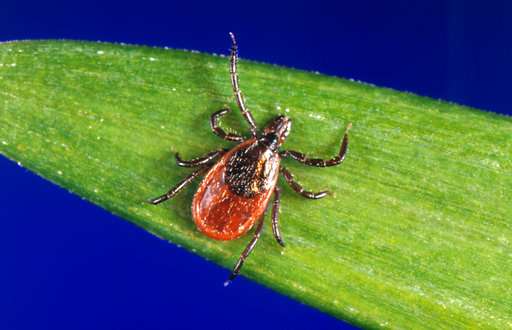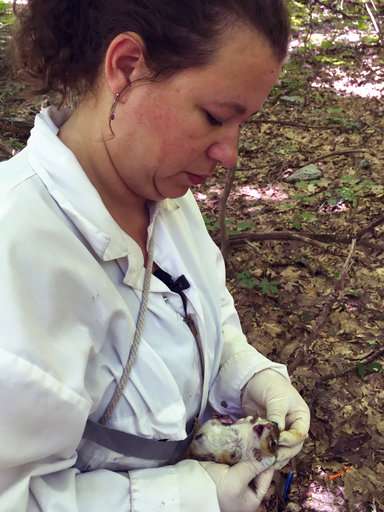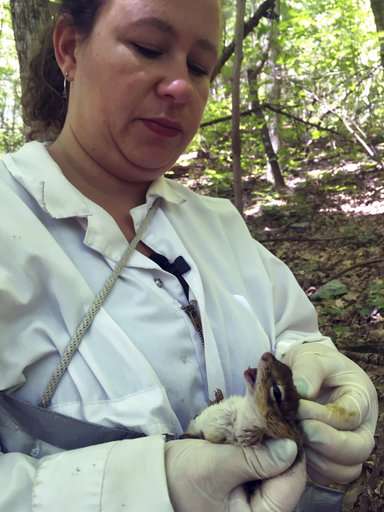Tick towns: Researchers target neighborhoods in Lyme effort

Maybe it will take a village to fight Lyme disease. Or a bunch of them.
With a bumper crop of blacklegged ticks possible this season, researchers in a Lyme disease-plagued part of New York's Hudson Valley are tackling tick problems across entire neighborhoods with fungal sprays and bait boxes. The $8.8 million, five-year project aims to find out if treating 24 neighborhoods in Dutchess County for ticks, also known as deer ticks, can significantly reduce cases of Lyme disease and other tick-borne illnesses.
"We want to do a better job and actually remove the threat from the neighborhoods, from the places where people are actually exposed to infected ticks," said Richard Ostfeld, a disease ecologist with the Cary Institute of Ecosystem Studies in Millbrook, about 70 miles (110 kilometers) north of New York City.
Dutchess County is a patchwork of forests, rolling farmland and thick residential developments that has long been a hotbed of Lyme disease. Tick checks are a common end-of-day routine here, as are inspections for the red, target-shaped rashes associated with tick bites.
People spray on tick repellents, treat their clothes with insecticide and even spray their yards. But Ostfeld notes that spraying individual lawns has not proved effective in fighting Lyme disease.

So he's scaling up from one backyard to many.
The Tick Project involves more than 900 families in neighborhoods that consist of about 30 to 50 participants. Yards are being treated in the spring and early summer with a fungal spray that kills ticks. Researchers also are deploying bait boxes to attract rodents. An insecticide in the box kills any ticks on mice and chipmunks, two animals largely responsible for infecting ticks with the bacterium that causes Lyme disease.
Researchers check in with families every two weeks in season to see whether anyone in the house, including cats and dogs, had ticks on them over the period.
The Tick Project is funded mostly through a $5 million grant from the Steven & Alexandra Cohen Foundation, created by the hedge fund manager and his wife. Ostfeld said 2021 is set aside for data analysis, thought they will have some sense of early results within a year.
Ostfeld would not divulge which neighborhoods are involved or who is participating, citing the need for privacy and of keeping good relations with participants.

Edward Blundell, mayor of the village of Red Hook, mentioned during an interview that he had agreed to take part in the study. While he felt he could take personal steps to protect himself from Lyme disease, he would be satisfied if something comes out of the research.
"Let's let the scientists look at this and give them a mini-lab site here, so we felt our yard could be the mini-site," Blundell said.
Tick researchers say such area-wide studies are complex and difficult to do. They are costly. It can be hard to get all the needed permissions. And variabilities in tick densities over study areas can make the science challenging. Thomas Mather, director of the Tick Encounter Resource Center at the University of Rhode Island, said executing a well-designed study large enough to produce valid results is a "Holy Grail" of tick researchers.
Phillip Baker, executive director of the American Lyme Disease Foundation, said the neighborhood approach sounded like a good one but noted that ticks are a resilient parasite.
"Ticks have been around for a long, long time," Baker said, "and there's no real easy approach to get rid of them."
© 2017 The Associated Press. All rights reserved.


















